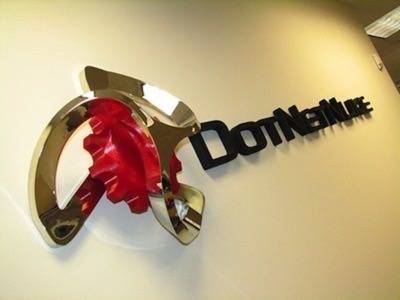
Version 7.0 of DotNetNuke, an open-source content-management system that you’ve probably never heard of, is now released and bringing enterprise-level web content functionality to users committed to Microsoft-based infrastructure. The .NET-based DotNetNuke will be a significant player in a growing cloud-computing environment where Microsoft Web servers may be more relevant.
Web Servers: Where Microsoft Doesn’t Rule
Depending on how you examine the data, less than one-fifth of the world’s sites run Microsoft-based Web servers like Internet Information Server. And, unlike all the cool kids running open-source code like Apache and nginx, IIS players don’t always want to run popular content-management systems like Joomla, Drupal or WordPress.

[Update: The preceding paragraph was corrected to update an error regarding the capabilities of CMS systems and IIS. -BKP]
Let’s be honest: 16.52% of the world’s tracked Web servers running IIS in November 2012 is tiny compared to Apache’s 57.23% share. But having almost 17% of servers locked up is still a heck of lot of sites — 103.3 million, actually. Even if just 1% of them need a WordPress-like CMS, that’s a little over a million sites pining away.
It’s all very well to snicker at these shops and prescribe spinning up some Apache-on-Linux servers, and installing Joomla or one of the other CMSes. But CIOs make IT investments for a strategic reason and have put a lot of time and money into their infrastructure. Generally, they’re not just rolling dice, which means it’s not always easy to get them to shift to non-Microsoft technologies.
Enter DotNetNuke Corp., maker of its self-named .NET-based platform. The CMS plays very well with native Microsoft tech and provides CIOs a robust tool that compares favorably with Drupal. Since its initial release in late 2002, DotNetNuke has enjoyed a strong following within the Microsoft ecosystem, and has about 800,000 registered users, according to Shaun Walker, co-founder and CTO of the company.

Filling The .NET Gap
The latest iteration of DotNetNuke has a broad range of new features, with a new interface that includes a more-robust editor and version-management system, as well as Active Directory support so enterprise employees can plug into site-content systems seamlessly. Cascading-style-sheet management is reportedly a lot easier to use, which should make designers happy.
DotNetNuke is a bit of an oddity within the Microsoft world. It’s actually an open-source licensed platform, using an MIT software license. The MIT license is what’s known as a permissive license, which means the code for the software is open but users and developers aren’t required to publish their changes, as with restrictive licenses like the GNU General Public License. Walker highlighted this as one reason why Microsoft-oriented customers don’t have a problem with using an open-source platform.
That DotNetNuke’s potential market is such a small minority of servers in the world might seem like a liability, but Walker believes that there is a lot of potential for DotNetNuke just around the corner. With the advent of HTML5 and Java-based sites, “pretty soon the underlying architecture won’t matter as much.”
If development does shift more to the client-side layer, then the Web server layer where Apache, nginx, and IIS live would become more of an abstraction. Given the relatively low cost of cloud-based instances of even IIS, companies with more .Net assets and developers might therefore migrate to IIS in order to streamline their IT resources.
That’s the vision Walker has, but it remains to be seen if IIS can experience strong growth, even in the cloud, up against the free Apache and nginx servers.
For now, DotNetNuke soldiers on, filling a gap for IT managers who are still dedicated to the Microsoft Way.
Image courtesy of Shutterstock.










